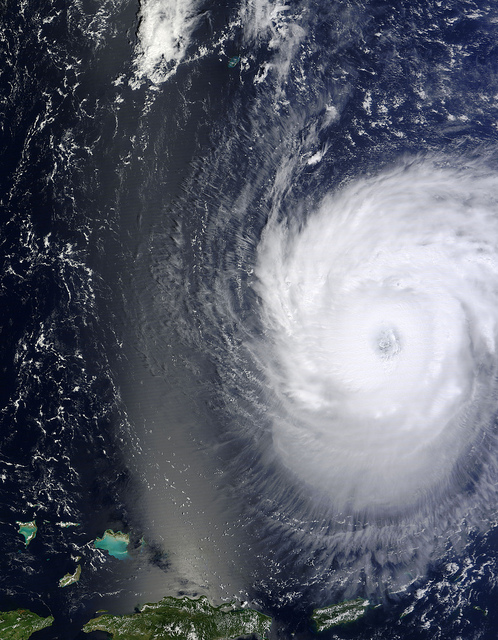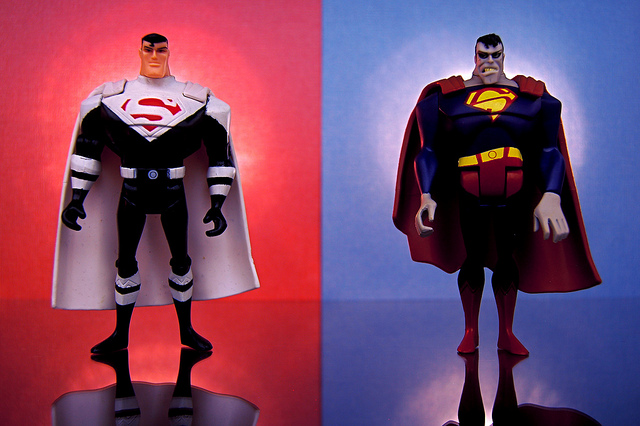Archive for March, 2017
Forecasting The Next Big Technology
 When a hurricane is on the horizon, we are all glued to our TVs. We want to know where it track so we know we’ll be safe. Will it track north and rumble over the top of us or will it track east and head out to sea? This is not trivial. In one scenario we lose our house and in the other the crazy surfers get to ride huge waves.
When a hurricane is on the horizon, we are all glued to our TVs. We want to know where it track so we know we’ll be safe. Will it track north and rumble over the top of us or will it track east and head out to sea? This is not trivial. In one scenario we lose our house and in the other the crazy surfers get to ride huge waves.
The meteorologist shows us a time-lapse of the storm center hour-by-hour. It was one hundred miles off shore an hour ago, it’s fifty miles off shore now and it will hit the shoreline in an hour. Drawing a line from where it was, through its location in the moment, the meteorologist can extrapolate where it will be an hour from now. In the short term, the storms trajectory will be unchanged and its momentum will help it maintain its pace. It’s pretty clear to everyone where the storm will be in an hour. No magic here.
But the good meteorologists can forecast a hurricane’s path days in advance. In a phenomenological way, they use behavior models of past storms, assume this storm is like past storms, turn the crank and forecast its trajectory. And they’re right more times than not. And they’re right enough to determine who should evacuate and who should sit tight. This is borderline magic.
The best meteorologists know where hurricanes want go because they understand hurricanes. They know hurricanes want to run in straight lines, if not follow gentle curves. They know hurricanes get anxious when they hop from sea to land, and they know, given the choice, will skirt the coastline and head back home to the salt water. Meteorologists know the rules hurricane’s live by and use that knowledge to tighten their forecast of the storm’s path.
Just as hurricanes have a desire to follow their hearts, technologies have a similar desire climb the evolutionary ladder. Just as hurricanes behave like their predecessors, technologies behave like their grandparents, aunts and uncles. And just as a meteorologist, using their knowledge of historical patterns and an understanding of hurricane genetics can forecast the path of a hurricane, technologists can forecast the path of technologies using historical patterns and an understanding of what technologies want.
And like with hurricanes, the best way to forecast the path of a technology is to define where it was, draw a line through where it is and project its trajectory into the future. Like hurricanes, technologies move in straight lines or gentle S-curves, so their next move is easy to forecast. If a technology has improved year-over-year, it will likely continue to improve. And if this year’s performance is the same as last year, it’s behavior will remain unchanged going forward. That’s how it goes with technologies.
The best technologists are like horse whisperers in that they can hear the inner voice of technologies. They know when a technology is ready to grow from infant to adolescent and know when a technology is ready to retire. The best technologists can read the tea leaves of the patent landscape and, knowing the predisposition of technologies, can forecast the next evolution. But just as some ranch owners don’t believe in horse whisperers, some company leaders don’t believe technology whisperers can forecast technologies.
But for believers and non-believers alike, it’s more effective to compare forecasting capabilities of technologists with the forecasting capabilities of meteorologists. The notions of trajectory and momentum have clear physical interpretations for hurricanes and technologies, and historical models of storm trajectories map directly to evolutionary paths of technologies.
If you’re looking to forecast where the next big storm will make landfall, hire a great meteorologist. But if you’re looking to forecast when the next technology will rip the roof off your business model, hire a great technology whisperer.
Image credit – NASA
Maximize The Learning Ratio
 As creatures of habit, we like to do what we did last time. Outcomes match expectations and things go as planned – no surprises, no delays, no problems. But as creatures swimming in an evolutionary soup, doing what we did last time leads to extinction. Customers’ expectations multiply and competitors mutate into a higher performing organism and eat us. There are two competing functions – do what we did last time to minimize energy and try new things to harden ourselves for the ever more competitive future.
As creatures of habit, we like to do what we did last time. Outcomes match expectations and things go as planned – no surprises, no delays, no problems. But as creatures swimming in an evolutionary soup, doing what we did last time leads to extinction. Customers’ expectations multiply and competitors mutate into a higher performing organism and eat us. There are two competing functions – do what we did last time to minimize energy and try new things to harden ourselves for the ever more competitive future.
You can’t reinvent yourself at every turn or your brain will run out of glucose and you’ll pass out. And you can’t always lounge on the couch or you’ll get out of shape and become a slow-moving snack for the new T-Rex on the block. If the endpoints lead to our demise, the solution must be something like the middle way.
If you can get away with it, do what you did last time – minimum energy living is a good gig if you can get it. With little investment and lots of return, there’s enough for everyone. Plenty to eat and some left over to put in stores for the winter. But plenty to eat and plenty of time to goof off may make for lazy (but happy) tribe members who may be of little use when it’s time to defend the business model against hostile species.
Live frugally to develop a surplus and spend some of it trying new things. Improved fitness is the best way to navigate the landscape, even the landscape still beyond the horizon. More than physical fitness, improved mental fitness is the dominant trait that leads to survival. But doing new work is energy intensive and must be done skillfully.
The primary reason we try new things is to learn. In that way, the new things we try are a means to an end – improved mental fitness. But because doing new is expensive from an energy perspective, the learning ratio (new learning divided by the energy to learn) must be high. First, be clear about what you want to learn because learning the wrong thing costs more energy than resting on the couch. Second, maximize the learning of your experiments.
If you run an experiment where you are 100% sure of the outcome, your learning is zero. You already knew how it would go, so there was no need to run the experiment. The least costly experiment is the one you didn’t have to run, so don’t run experiments when you know how they’ll turn out. If you run an experiment where you are 0% sure of the outcome, your learning is zero. These experiments are like buying a lottery ticket – you learn the number you chose didn’t win, but you learned nothing about how to choose next week’s number. You’re down a dollar, but no smarter.
The learning ratio is maximized when energy is minimized (the simplest experiment is run) and probability the experimental results match your hypothesis (expectation) is 50%. In that way, half of the experiments confirm your hypothesis and the other half tell you why your hypothesis was off track.
We can argue about the energy balance between leveraging best practices and creating new recipes. But, when you want to learn, there can be no argument – maximize the learning ratio.
Image credit – Craig Sunter
If you don’t know what to do, you may be on the right track.
You had to push through your fear of being judged?
You had to break some rules to get an idea off the ground?
You had a concept that would displace your most successful product?
Your colleague tried to scuttle your best idea?
You knew it was time to stop judging yourself negatively?
Your colleague asked you to help with a hair-brained idea?
You were asked to facilitate a session to create new concepts, but no one could explain what would happen after the concepts were created?
You weren’t afraid your prototype would be a success?
You thought you knew what the customer wanted, but didn’t have the data to prove it?
You were asked to create patentable concepts you knew would never be commercialized?
Your prototype threatened the status quo?
You were asked to facilitate a session to create new concepts and told how to do it?
You were told “No.”
You saw a young employee struggling with a new concept?
You were blocking yourself from starting the right work?
You thought your idea had merit, but you needed help testing it in the market?
You were asked to follow a standard process but you knew there wasn’t one?
You were asked to come up with new concepts though there were five excellent concepts gathering dust?
You were told there was no market for your new-to-world prototype?
You had to bolster your self-confidence to believe wholeheartedly in your idea?
There is a name for what you would do. It’s called innovation.
image credit – UnknownNet Photography
Responding With Kindness
 If some talks to you in an angry way, what do you do? Well, if it’s a family member you take it personally and respond with equal and opposite anger. If it’s someone at work, you take it personally but use a bit more restraint. And in both cases, the root of all the trouble is taking their anger personally.
If some talks to you in an angry way, what do you do? Well, if it’s a family member you take it personally and respond with equal and opposite anger. If it’s someone at work, you take it personally but use a bit more restraint. And in both cases, the root of all the trouble is taking their anger personally.
There can be no argument if the second doesn’t accept the radiated negativity of the first. In that way, arguments are like tennis – it takes two to play a match worth watching. But in the heat of the moment, and even in the residual heat after the moment, it’s tremendously difficult remember their anger is about them.
The natural tendency is to focus on the injustice of the other’s anger. They’re out of line, they’re wrong, they shouldn’t yell like that. But pouring your energy into that bucket won’t end the arguments. You can’t control their behavior, you can only control your response to their behavior. The only way to end the arguments is to look inside and figure out why you take their anger personally.
If their anger threatens you, you’ll take it personally and respond in-kind. And what is threatened is your image of yourself. If you don’t think highly of yourself, you call your caliber into question and respond with anger to prop up and protect your self-image. But, if you don’t think their rage applies, you won’t be threatened and you’ll respond effectively. And you’ll be able to help them be more effective.
When you respond to anger with kindness, people notice. It may take them a while to understand there is no hidden agenda and your kindness truly kindness, but when they do, they change and your relationship changes. Trust and mutual respect blossom and the future has no limit.
It’s not easy to respond to anger with kindness. But in the end, it’s worth it.
Image credit – Dean Hochman
Improving What Is and Creating What Isn’t
There are two domains – what is and what isn’t. We’re most comfortable in what is and we don’t know much about what isn’t. Neither domain is best and you can’t have one without the other. Sometimes it’s best to swim in what is and other times it’s better to splash around in what isn’t. Though we want them, there are no hard and fast rules when to swim and when to splash.
Improvement lives in the domain of what is. If you’re running a Six Sigma project, a lean project or a continuous improvement program you’re knee deep in what is. Measure, analyze, improve, and control what is. Walk out to the production floor, count the machines, people and defects, measure the cycle time and eliminate the wasteful activities. Define the current state and continually (and incrementally) improve what is. Clear, unambiguous, measurable, analytical, rational.
The close cousins creativity and innovation live in the domain of what isn’t. They don’t see what is, they only see gaps, gulfs and gullies. They are drawn to the black hole of what’s missing. They define things in terms of difference. They care about the negative, not the image. They live in the Bizarro world where strength is weakness and far less is better than less. Unclear, ambiguous, intuitive, irrational.
What is – productivity, utilization, standard work. What isn’t – imagination, unstructured time, daydreaming. Predictable – what is. Unknowable – what isn’t.
In the world of what is, it’s best to hire for experience. What worked last time will work this time. The knowledge of the past is all powerful. In the world of what isn’t, it’s best to hire young people that know more than you do. They know the latest technology you’ve never heard of and they know its limitations.
Improving what is pays the bills while creating what isn’t fumbles to find the future. But when what is runs out of gas, what isn’t rides to the rescue and refuels. Neither domain is better, and neither can survive without the other.
The magic question – what’s the best way to allocate resources between the domains? The unsatisfying answer – it depends. And the sextant to navigate the dependencies – good judgement.
Image credit – JD Hancock


 Mike Shipulski
Mike Shipulski